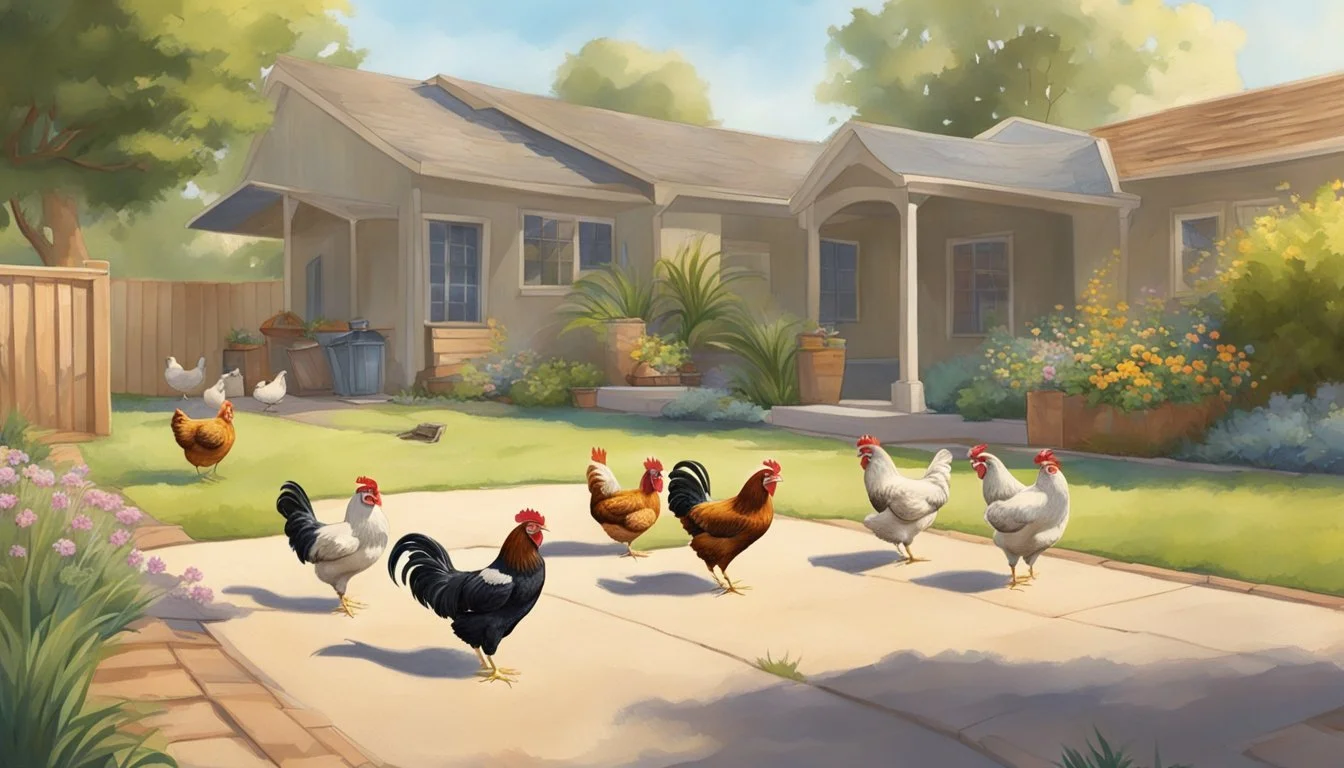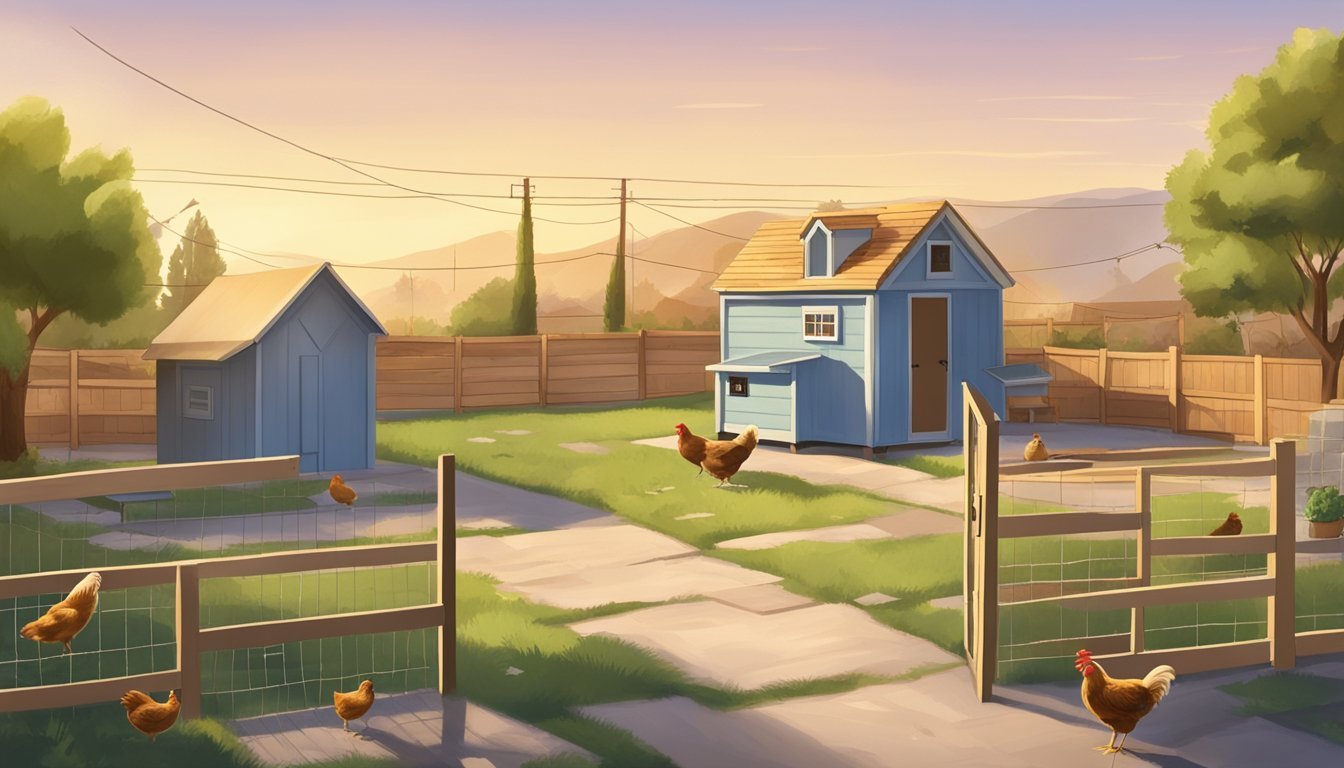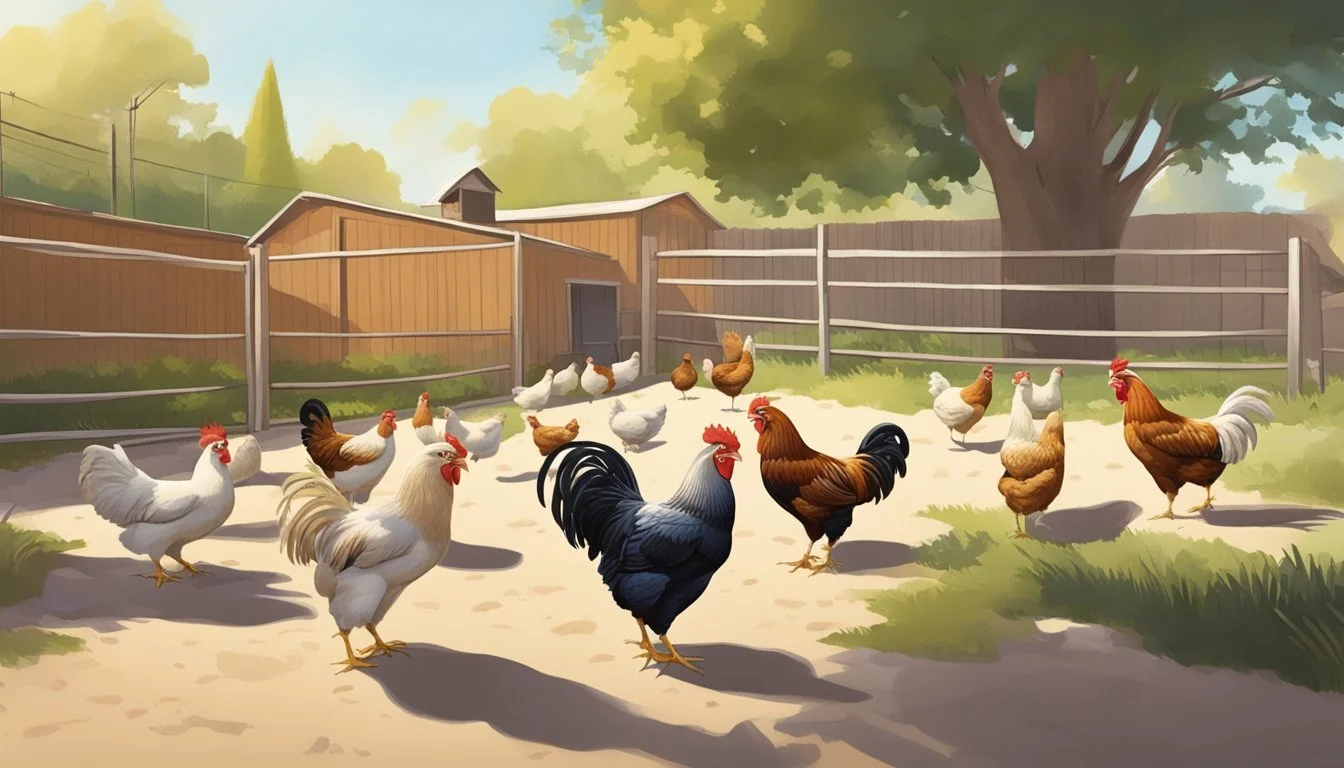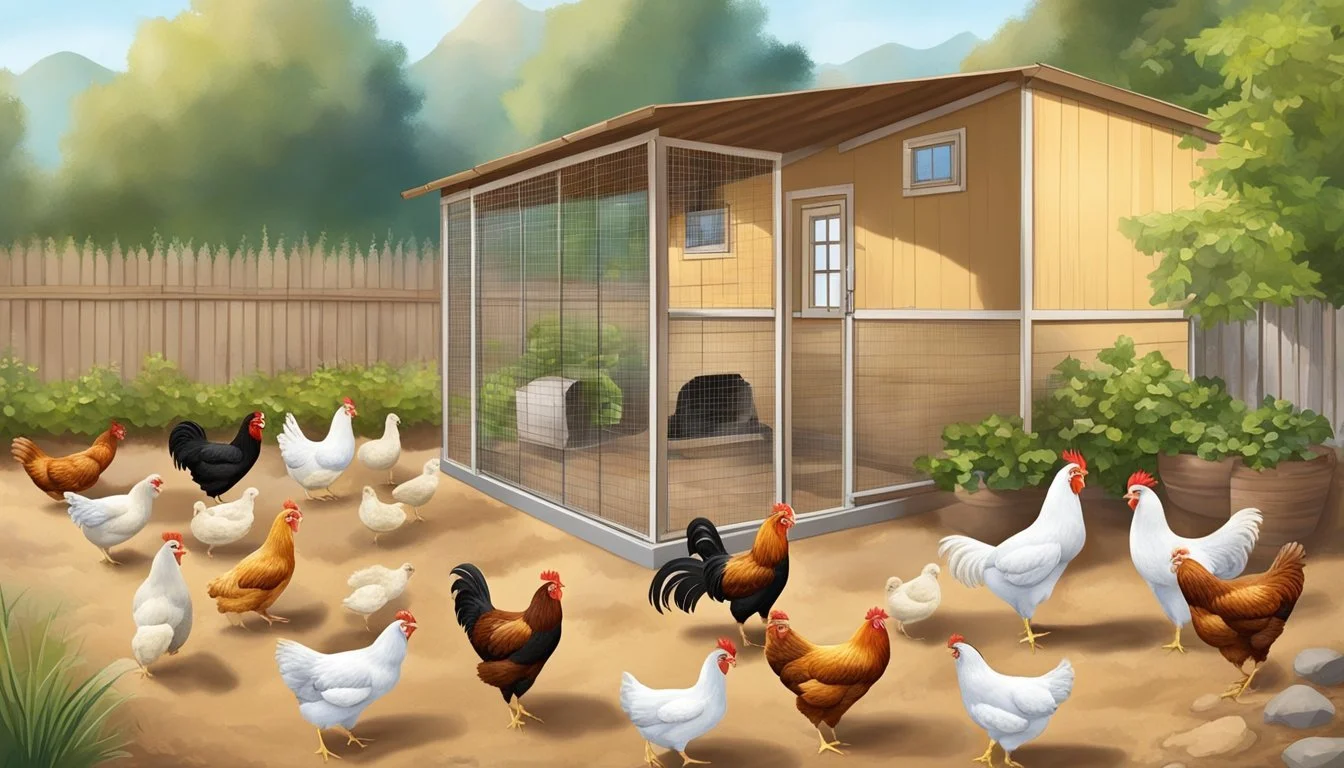Keeping Backyard Chickens in San Bernardino, CA
A Guide to Local Regulations and Best Practices
Keeping backyard chickens has become increasingly popular in San Bernardino, CA, as residents embrace the benefits of fresh eggs and the joys of poultry husbandry. The local climate is conducive to raising chickens, offering mild winters and ample sunshine. However, prospective poultry keepers must navigate a series of local laws and ordinances designed to ensure public health, safety, and neighborhood harmony.
In San Bernardino, specific regulations pertain to the number of chickens allowed and the conditions required for their care. For residential properties with less than 7,200 square feet, two female poultry are permitted, which enables small-scale egg production for family use. It's important for residents to verify their property's zoning and comply with any additional restrictions to avoid potential fines and legal issues.
Understanding the nuances of local ordinances is crucial for keeping backyard chickens in San Bernardino. Careful planning in coop construction, maintaining cleanliness, and managing noise levels are key to raising chickens successfully within city limits. Prospective chicken owners should also keep in mind that while hens are generally allowed, roosters may be restricted due to noise concerns.
Understanding Local Chicken Laws
When considering raising backyard chickens in San Bernardino, California, it's essential to understand the specific local regulations that govern land use, zoning, and permits. Adhering to these rules helps ensure a harmonious relationship with both the local authorities and neighboring residents.
San Bernardino Zoning and Permits
In San Bernardino County, residents must consult the zoning ordinances related to keeping chickens to determine if their area allows for such an activity. Typically, it's permitted in residential zones, but one should always check with the San Bernardino County zoning office for the latest updates and specific local laws. The office can also guide on any permits that may be required to legally keep chickens on their property.
Residential Area Restrictions
Local chicken laws in residential areas are designed to maintain community health and happiness. These restrictions often dictate where chicken coops can be placed on a property, specifically regarding their proximity to neighboring homes. For instance, there may be a required setback from property lines or dwellings, which is intended to minimize noise and odor concerns.
Flock Size and Coop Requirements
San Bernardino County has guidelines for the number of chickens a resident can keep:
Maximum of 26 hens per acre
1 rooster per acre (if allowed)
These numbers can vary based on the specific location within the county and are subject to change, so verifying with local authorities is crucial. Coop requirements also exist to ensure the safety and welfare of the birds, including sufficient space, protection from predators, and proper sanitation.
Prohibited Birds and Animals
While chickens are often allowed, other birds and farm animals may have restrictions. San Bernardino's regulations place a limit on the number of male poultry per parcel and categorize them by genus to prevent overcrowding and noise issues. Moreover, residents should be aware of any prohibited animals that cannot be kept in residential zones, such as certain breeds of ducks, goats, or more exotic birds.
Each subsection provides a focused look at different aspects of compliance with backyard chicken laws in San Bernardino County, ensuring enthusiasts are both informed and responsible.
Setting Up a Chicken Coop
When setting up a chicken coop in San Bernardino, CA, residents must adhere to specific design standards, choose a location that meets the legal setbacks, and take measures to protect their chickens from predators.
Coop Design Standards
The construction of a chicken coop should prioritize the health and safety of the chickens. It is essential that the coop is ventilated to ensure adequate air circulation, reducing the risk of respiratory issues amongst the birds. The coop must include:
Nesting boxes: One box per 3-4 hens is recommended.
Perches: Allow enough space for all chickens to roost comfortably.
Proper insulation: Protects from extreme temperatures.
The coop and run area should be clean, organized, and large enough for the chickens to move freely and exhibit natural behaviors.
Coop Location and Setbacks
In Yucca Valley, a town within San Bernardino County, the law requires a coop to be at least 50 feet from a neighbor's dwelling. Setbacks can vary by jurisdiction, so it's imperative to:
Check local ordinances for specific distance requirements.
Position the coop away from property lines to comply with local setbacks.
Protecting from Predators
Chickens must be safeguarded from potential predators such as coyotes, birds of prey, and raccoons. Effective measures include:
Fencing: Use hardware cloth or a similar secure material.
Coop doors: Must close firmly to prevent predator intrusion.
Deterrents: Like motion-activated lights to scare off unwelcome visitors.
Consistent vigilance and maintenance of these deterrent measures are crucial for the wellbeing of backyard chickens.
Chicken Health and Welfare
In San Bernardino, CA, the well-being of backyard chickens hinges on appropriate nutrition, disease control, and adequate living space. These factors are crucial in preventing the spread of diseases like salmonella and maintaining the overall health of the flock.
Feeding and Watering
Chickens require a balanced diet consisting of proteins, vitamins, and minerals. A common approach includes layer pellets for hens that provide the necessary nutrients for egg production. They should have continuous access to fresh water, which needs to be replenished daily to prevent the growth of harmful bacteria.
Food: Layer pellets, grains, kitchen scraps, and grit.
Water: Clean, fresh, and available at all times.
Cleanliness and Disease Management
Maintaining a clean environment is essential to ward off diseases. Coops must be cleaned regularly, with the removal of waste and replenishing of bedding materials. This reduces the risk of disease and parasites. Owners should look out for signs of illness, and a veterinarian should check any sick chickens, as diseases like salmonella can spread quickly through a flock and even transmit to humans.
Clean: Coop cleaning schedule; daily, weekly, and monthly.
Health: Regular health checks and prompt medical attention when needed.
Living Space Considerations
Overcrowding can lead to stress, promoting disease and aggression in chickens. The minimum space requirements depend on the size and type of the breed. They need space to forage, stretch, and engage in natural behaviors. Adequate space is also necessary to maintain a healthy number of chickens and prevent the spread of disease.
Living Space: Nesting boxes and perches; space for roaming and foraging.
Number of Chickens: Comply with local regulations on flock size to prevent overcrowding.
Flock Management Practices
Effective flock management in San Bernardino, CA, centers around systematic egg laying and collection strategies, composting chicken waste responsibly, and mitigating noise to maintain good relationships with neighbors.
Egg Laying and Collection
Hens in San Bernardino require ample space for nesting; a general guideline is to provide 3.0 to 3.5 square feet per bird. The egg laying process necessitates a clean and quiet environment to encourage hens to lay regularly. Collection should be done daily to ensure freshness and prevent breakage.
Daily collection times: Morning and late afternoon
Nesting box dimensions: At least 12" x 12" x 12" per hen
Composting Chicken Waste
The large amount of poop chickens produce can be turned into an advantage by composting it to enrich gardens. However, managing the waste properly is crucial for hygiene and odor control.
Composting steps:
Gather the droppings and bedding material.
Layer with other composting materials (e.g., kitchen scraps, leaves).
Regularly turn the pile to aerate and facilitate decomposition.
Handling Noise and Neighbors
Neighboring residences may be affected by the noise, especially from roosters. In San Bernardino, it is important for keepers to be considerate by:
Limiting the number of roosters to reduce crowing
Providing adequate space and enrichment to prevent excessive noise from hens
Erecting sound barriers if necessary to contain noise within the property boundaries
By following these guidelines, owners can maintain a healthy and productive backyard flock while being respectful of their community.
Legal Implications and Responsibilities
In San Bernardino County, California, residents must navigate local ordinances and health regulations to legally keep backyard chickens. Understanding and adhering to these laws is crucial for the welfare of the animals and the community.
Animal Control and Health Regulations
San Bernardino County stipulates specific guidelines for keeping backyard chickens. Residents living on parcels less than 7,200 square feet are allowed to keep up to two female poultry, which includes chickens. Larger properties have different allowances, and roosters are generally more restricted due to noise concerns and potential aggression.
Key regulations include:
Housing: Adequate shelter and living conditions to protect the chickens' health and safety.
Sanitation: Regular cleaning of the living area to prevent odor and disease.
Noise: Ensuring roosters do not cause a disturbance, which may lead to complaints or fines.
Health considerations involve monitoring for and preventing avian diseases, which can spread to both other domestic fowls and humans in some cases. Regular veterinary care and vaccinations may be required.
Understanding Consequences of Non-compliance
Failure to comply with local ordinances can result in fines, penalties, or even the removal of the chickens from the property. In extreme cases, non-compliance with animal welfare laws can lead to harsher legal consequences, including criminal charges.
Residents should also consider the following:
Communication: Informing neighboors and addressing their concerns can prevent complaints.
Knowledge: Staying informed on any changes to local laws that affect poultry keeping.
Responsibility: Being a responsible owner not only complies with laws but also ensures the well-being of the chickens and community relations.
It's important for individuals to contact local authorities or consult legal experts for guidance specific to their circumstances. This ensures that backyard chicken enthusiasts in San Bernardino understand their obligations and the importance of maintaining legal and ethical standards in their poultry-keeping practices.
Support and Resources
For individuals in San Bernardino, CA looking to keep backyard chickens, there are numerous local entities and educational materials available that provide valuable assistance and guidance. These resources can help residents navigate zoning laws, care practices, and community engagement.
Local Government and Community Groups
San Bernardino residents can look to several local government resources for information regarding backyard chicken regulations. The city’s Animal Control division often has the answers to specific inquiries about the number of chickens allowed per acre and other important regulations.
San Bernardino County: For county-wide regulations and guidelines, residents can contact San Bernardino County’s Land Use Services Department.
City-specific Resources: In surrounding cities such as Los Angeles, Long Beach, San Diego, and San Francisco, local municipal code and zoning departments provide specific ordinances pertaining to the keeping of backyard chickens. It's advisable for residents to review their city's zoning codes or contact city officials for precise information.
Community groups are also an excellent resource for support:
BackYard Chickens Community: A platform where chicken owners in different cities, including those in San Bernardino, share their experiences and knowledge.
Local Farming Groups: Many urban farming collectives and neighborhood groups exist where members can share tips and best practices for chicken care.
Educational Materials and Workshops
A plethora of educational materials and workshops are available for new and existing poultry enthusiasts, ensuring the proper care and maintenance of backyard flocks:
Backyard Fowl Guide: San Bernardino County has a guide that covers chicken care across their lifespan, beneficial for new chicken owners.
Websites and Online Forums: ChickenLaws.com and other similar websites offer resources and can send updates on local chicken laws directly to your inbox.
For hands-on learning, workshops can be invaluable. These are often offered by:
Local Agricultural Extension Offices: They frequently conduct workshops on poultry care.
Urban Farming Organizations: They may host classes focusing on the diverse aspects of raising chickens, ranging from coop-building to feed and health care.
Residents can take advantage of these educational opportunities to ensure they are well-informed about the best practices for maintaining healthy backyard flocks within legal guidelines.
Conclusion
In San Bernardino County, the prospect of raising backyard chickens is subject to local regulations, which can vary by jurisdiction. Prospective poultry keepers should consult their local zoning office as the primary source of guidance and regulation. Areas zoned as residential-agricultural often have clear stipulations regarding lot size and property requirements, enabling residents to embark on backyard chicken farming with confidence.
San Bernardino County recognizes the rising popularity of sustainable living practices, including the cultivation of backyard chickens for fresh eggs. Interested individuals must thoroughly understand and comply with local regulations to ensure their chicken-keeping practices are within legal boundaries. It is crucial that residents pay close attention to:
Property Size Restrictions: Certain areas may require a minimum lot size.
Permit Requirements: Some locations may necessitate a permit for raising chickens.
Zoning Regulations: Verification with city zoning codes is imperative to ascertain if poultry keeping is permissible in one's residential area.
The process for obtaining approval for backyard chickens may vary; however, cities within the county are appreciative of the increased interest in self-sufficiency and local food sources. Residents are often able to enjoy the benefits of raising chickens and the fresh eggs they provide, so long as they adhere to local guidelines. Cooperation with permit officials and adherence to zoning codes are paramount for a successful and legal backyard chicken experience in San Bernardino County.









